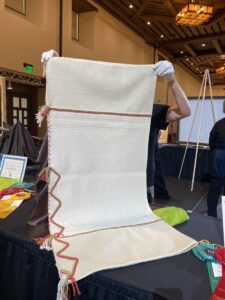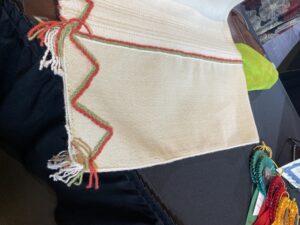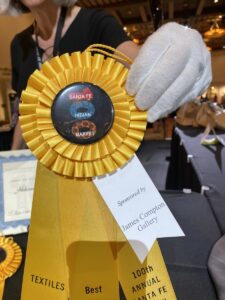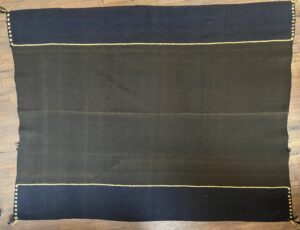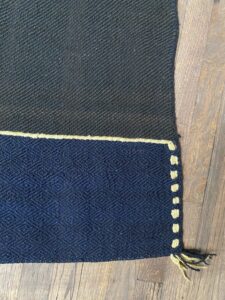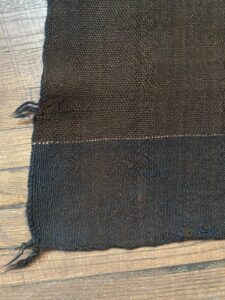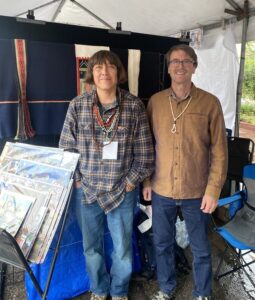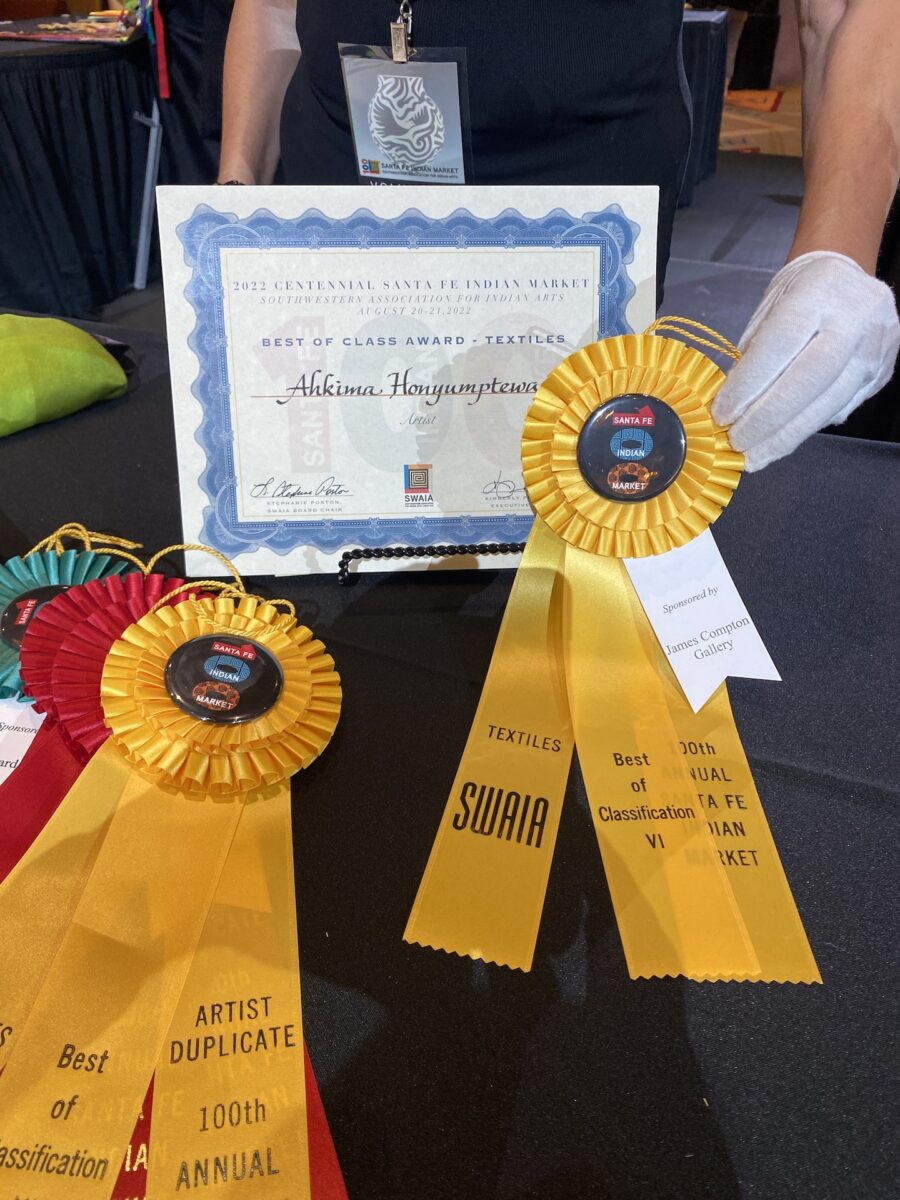
Ahkima Honyumptewa is the winner Best of Class Textiles at SWAIA Santa Fe Indian Market
- by Jamie Compton
- in Gallery News
- posted August 20, 2022
A Beautiful Hopi White Manta with Accents
Ahkima Honyumptewa (Hopi) from Paagvavi in Third Mesa is the winner for SWAIA’s Santa Fe Indian Market for Best of Class in Textiles. Ahkima is both a painter and a weaver. I am very proud to sponsor this prize and it’s a personal one as mantas are one of my most favorite types of weavings to collect.
The winning textile is a manta done mostly in all white. The manta is folded in half as a dress and lightly stitched up along the side with a rust red yarn. As best as I can tell from my brief visit of this weaving, the upper and lower border are done in a diamond twill and the body a diagonal weave with “hills and valleys” at both the upper and lower zones. The all white warp and weft is wool. The weft in the diamond twill borders is an off white soft golden hue. This difference can be seen in the photo and is one of the subtle powers of this weaving. There is an embroidered zig-zag border to the edge done in a rust red and a pale green. The same two colors border the transition from diamond twill to plain weave. Tassels at the corners and juncture of the diamond twill with the plain weave incorporate the white selvage cords along with the red and green yarn.
Video of Ahkima Honyumptewa
I have yet to meet Ahkima to verify what I have described above. I wonder if this manta is done with the idea of a wedding dress or some relation to marriage since the Hopi often use white, cotton woven mantas for weddings. I found this great video of Ahkima describing in detail the weavings she works on.
Historic Mantas
Historic mantas are one of my most favorite items to collect. I have included here two early mantas that are particularly special to me. The first is either woven by a Navajo or Zuni weaver. This has Navajo characteristics such as large diamonds in the twill, the central added lighter yarn defining the center of the weaving, lazy lines and the fact that this weaving was turned on the loom. There are also pics of early red bayeta yarn found throughout the piece, another Navajo trait. However, the brocade of yellow yarn is more a Zuni trait.
This manta has diamond twill at the two borders separated from the brown diagonal twill body with a golden yellow brocade. It measures 50″ by 39″ and likely dates to the first half of the 19th century.
The second manta measures 41.5″ by 29″ and is considered to be a child’s piece due to the small size. This manta is considered very early and how early we can only guess. The diamond twill indigo borders are almost all worn away and one can barely find evidence of the diamonds. The body is a plain weave. There is only one weft of a light, camel colored yarn separating the diamond twill from the plain weave. This manta is garment like as it’s so thin and supple.
Update!
I just stepped out of my gallery and went to the Santa Fe Plaza and found Ahkima at booth #275. We had a great, short visit and he corrected me on some of my assumptions about his prized manta and I made the changes in the body of the blog above. Here is a photo of Ahkima and me taken by his brother Jason. All the textiles behind us are woven by Ahkima.

